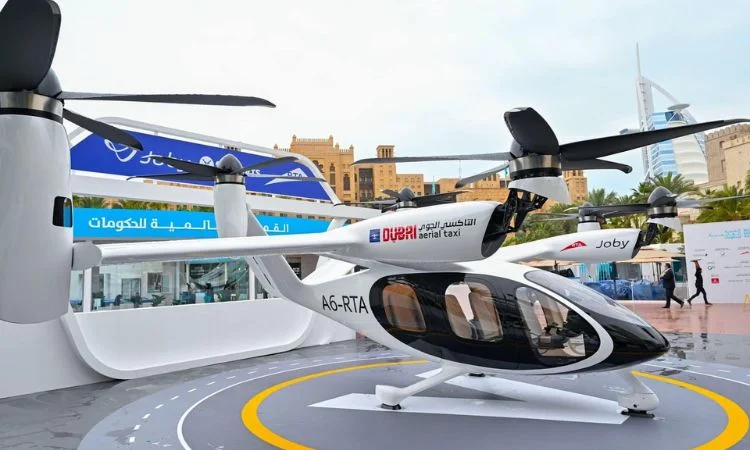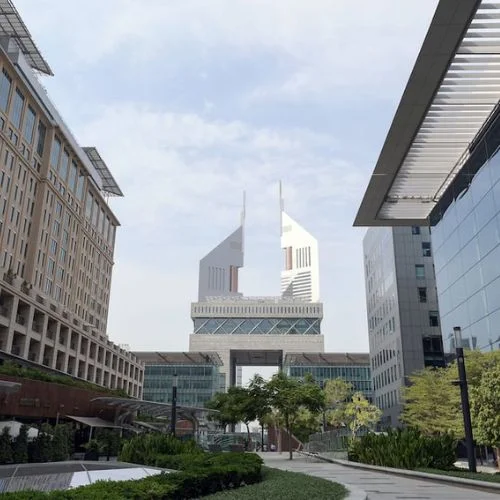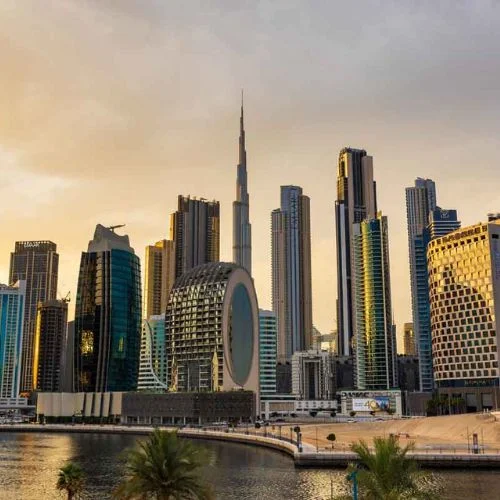Emirati city Dubai has become well-known around the world for its mind-blowing dynamic creativity as well as its tremendous capacity to incorporate quickly changing technologies. Dubai sets the whole world ablaze with its efforts to initiate the construction of the tallest tower and the launching of driverless metro trains, each of which is a proof that it is always the first. Nowadays, people can fly to their destination which could be in different places by using the flying taxis as another way of getting around.

Dubai’s dedication to being on the forefront of future cities is somehow confirmed by the fact that a large number of 100 flying cars have been ordered from the local company Aviterra so that the residents may stay connected with the door-to-door transportation system. Planned for a launch between 2025 and 2026, the airborne services will be provided on a dedicated flight path, which would grant a huge advantage over road traffic and make commutes much faster than before. It was the first car in this category that was used for flights instead of road travel. This so-called “flying car” has a speed of up to 180 km/h at its maximum and can fly up to 500 km at one charge.
The two-seater Liberty runs on conventional car fuel and can switch seamlessly between land and air modes. Taking off and landing vertically requires just 120 meters, meaning these flying taxis can operate from small helipads on building rooftops or even large open ground spaces. After arriving at their destination, passengers can simply drive the car to their final location, parking it like any other vehicle.
Mouhanad Wadaa, Managing Director of Aviterra, expressed confidence that residents will embrace this new mobility solution. “People are already used to the idea of flying taxis from science fiction books and films. Now that dream is becoming a reality,” he said. Aviterra will provide trained pilots and maintain the fleet of airborne cars, with passengers only needing a driver’s license to operate the vehicle on land.
The Dubai genie has jumped in the flying journey of cars, thus is part of its plan for a long time transformation of urban transport. The Emirate disclosed back in 2017 its ambition to transform 25% of the passenger journeys into flights within the sky by 2030. United Automotive Systems (Uber), Airbus, and Boeing are helping a city precisely Dubai on air-taxi projects. Some models can take-off vertically and land without the runway. The beginning of this year, Dubai reached an agreement with US startup Joby Aviation to fly the air taxi services within a very short time of 6 years.
Overall, the positive sides of the flying car phenomenon are astounding. Like hitting the sky with no hassle of traffic jams, commuters can now opt to reach the destination in mere minutes, without getting stuck in a traffic jam. For instance, a half-hour long journey along the road between Dubai Marina and Dubai International Airport can turn into a five-minute long journey by air. This will help boost productivity and quality of life for residents no longer confined by road congestion.
Environmentally, electric vertical take-off and landing (eVTOL) aircraft produce negligible emissions. As battery technology advances, flying cars may soon be powered solely by renewable energy. This will aid Dubai’s goal of achieving net-zero emissions by 2050. Flying also opens up new possibilities for urban planning by reducing dependence on wide roads. Land freed up can be repurposed for parks, cycling paths and pedestrian areas instead.
Of course, the introduction of personal air vehicles does come with challenges. Safety will need to be rigorously tested and regulated through stringent certification standards. Early adopters may experience teething issues with new technologies. There are also concerns about noise pollution from aircraft in populated urban areas. However, eVTOL designs incorporate features like ducted fans that produce a fraction of the sound of helicopters.
If all goes according to plan, Dubai’s flying taxi dream could revolutionize the way people commute. Residents may soon be zipping over traffic while enjoying panoramic views. The city’s futuristic vision is an inspiration for other metropolises to embrace new mobility solutions as well. With its track record of transforming far-fetched ideas into reality, there’s no doubt Dubai will successfully soar into the skies with its airborne fleet. The future of transportation is flying high – quite literally.















